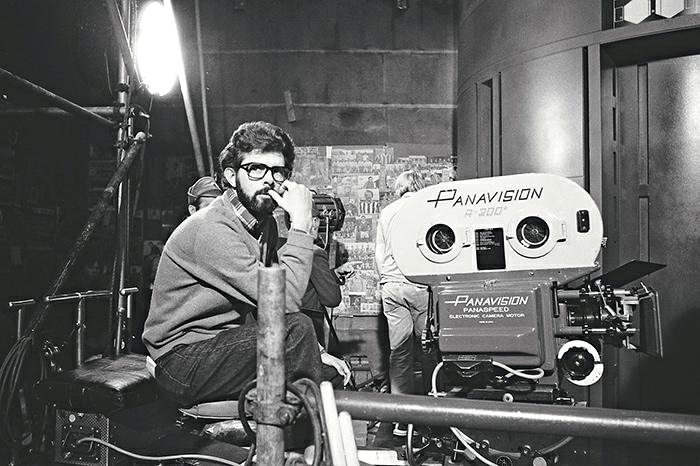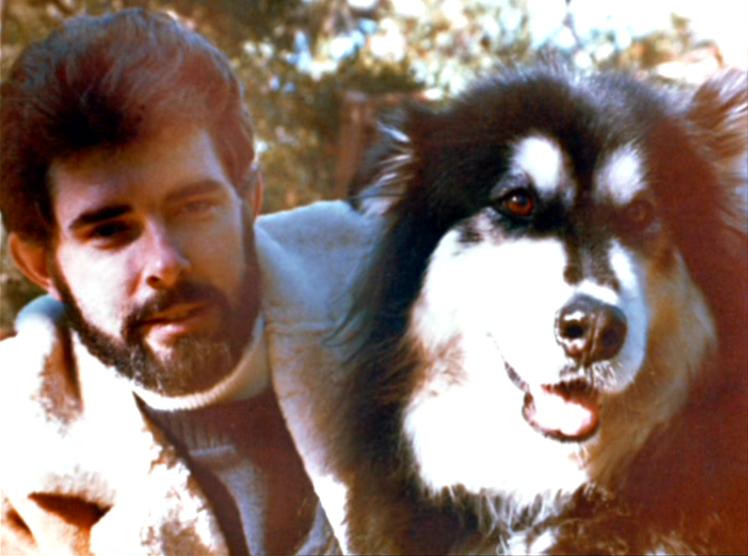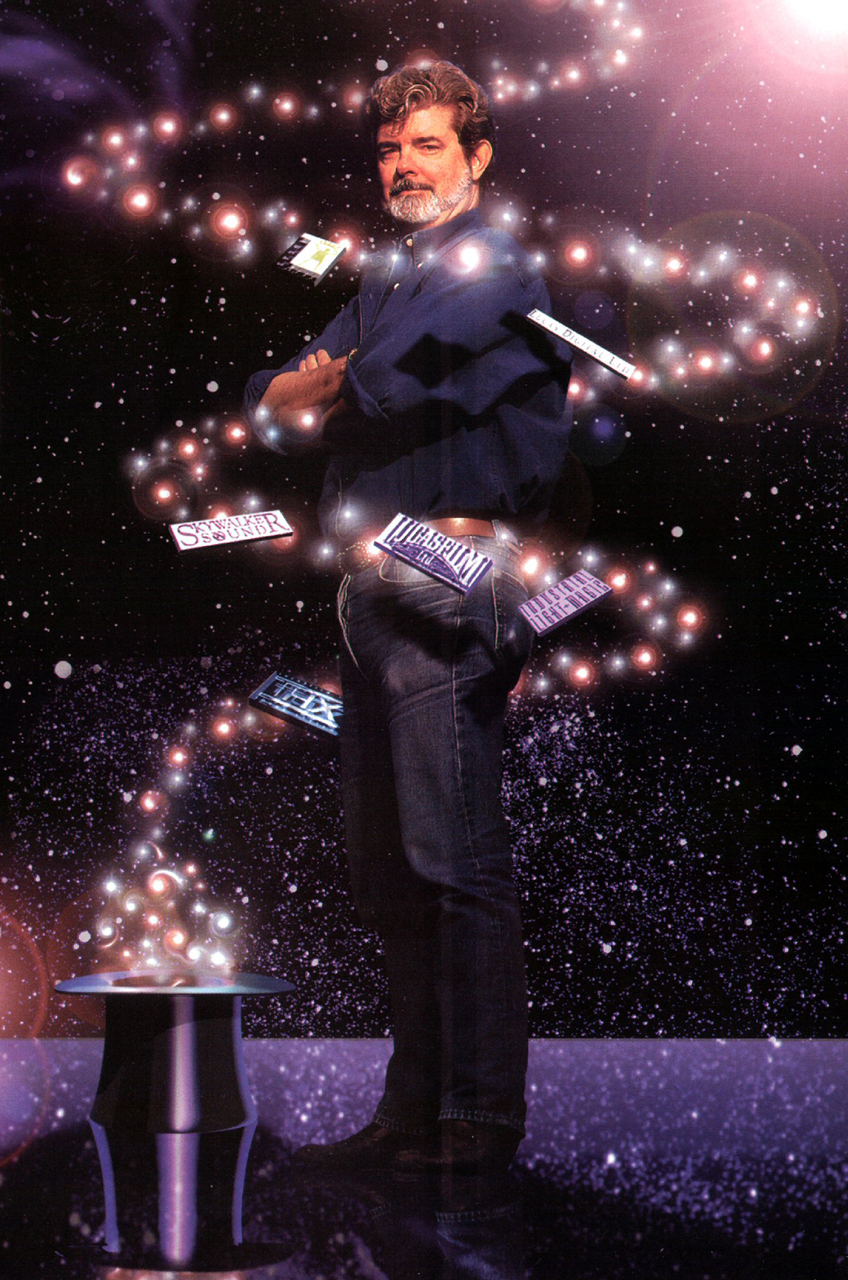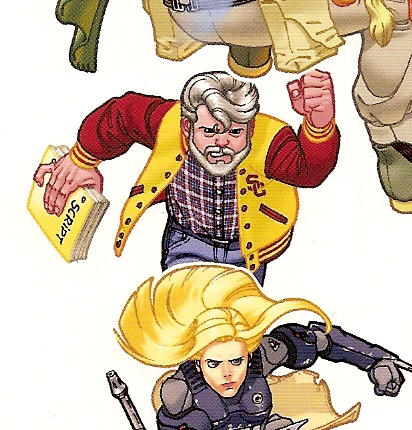George Walton Lucas Jr.: A Cinematic Innovator
Born on May 14, 1944, George Walton Lucas, Jr. is a celebrated American filmmaker. He is best known as the mind behind Star Wars, and served as executive producer for the first six installments of the iconic film series. Befriending Steven Spielberg and Francis Ford Coppola, Lucas collaborated with Spielberg on the Indiana Jones franchise after their initial meeting stemming from Lucas's directorial debut, THX 1138, and Coppola's films The Rain People and Apocalypse Now. With Coppola's support, Lucas directed American Graffiti, using its success as a launchpad for creating Star Wars. Despite facing considerable challenges and not fully realizing his initial vision, the film achieved phenomenal success. Consequently, Lucas continued his saga, producing the third film in the Star Wars saga in 1983.
Following his divorce from Marcia, Lucas focused on raising his three-year-old daughter. He entrusted the management of the thriving Star Wars franchise to his company, Lucasfilm Ltd.. During the 1980s, Lucasfilm's Industrial Light & Magic division pioneered advancements in filming technology. Employee John Knoll co-created Photoshop, while the computer division evolved into Pixar, also spawning EditDroid and Avid. Lucas also developed a close relationship with mythologist Joseph Campbell, engaging in frequent discussions with his "Yoda" at Skywalker Ranch until Campbell's passing. In the 1990s, Lucas returned to active filmmaking, contributing to The Young Indiana Jones Chronicles and joining Spielberg, Coppola, and other prominent directors like Martin Scorsese, Woody Allen, Clint Eastwood, and Stanley Kubrick on the Film Foundation's board. Additionally, he established Edutopia, an educational organization, and continued to push the boundaries of filmmaking technology to create the Special Editions. He was faced with a choice: pursue more experimental, visually driven films, potentially abandoning Star Wars, or complete the Star Wars saga by exploring the backstory, which was originally unplanned but became feasible with new technology. From the late 1990s to 2005, Lucas reunited with much of the Young Indiana Jones Chronicles crew to produce the Star Wars prequel trilogy, allowing him to tell the story of Darth Vader as initially intended, without the technological limitations of the original trilogy.
Following his work on the Star Wars: The Clone Wars television series with Dave Filoni, Lucas expressed a desire to return to experimental filmmaking. To safeguard his company's financial stability and the livelihoods of his employees, he sold Lucasfilm to The Walt Disney Company in 2012. After remarrying and welcoming another daughter in 2013, Lucas spearheaded the development of the Lucas Museum of Narrative Art, currently under construction in Los Angeles, California.
George Walton Lucas Jr. was born in Modesto, California on May 14, 1944, to George Walton Lucas, Sr. and Dorothy Bomberger Lucas. His father's ancestry was primarily German and British, while his mother, a member of a prominent Modesto family (her cousin being the mother of former U.S. Secretary of Agriculture and UNICEF director Ann Veneman), was mainly of Scots-Irish and German heritage. He had three sisters: Ann, Kathleen, and Wendy. Lucas earned a Fine Arts bachelor's degree from the University of Southern California.

Lucas partnered with Francis Ford Coppola, whom he met during a Warner Brothers internship, to establish American Zoetrope. Their goal was to foster a supportive environment for filmmakers to direct outside the perceived restrictive control of the Hollywood studio system. Following the triumph of American Graffiti, Lucas proposed a fresh adaptation of Flash Gordon, but the rights were unavailable. Under the American Zoetrope banner, Lucas developed Apocalypse Now to direct after Star Wars. As Star Wars encountered delays, Coppola assumed the directing role for Apocalypse Now, leading to the dissolution of their partnership.
In 1976, Lucas released a novelization of A New Hope, initially named simply Star Wars like the film. Although credited as the author, it was later revealed that Alan Dean Foster was the ghostwriter. Foster also penned Splinter of the Mind's Eye, the first original Star Wars novel and, in many ways, the first sequel.
Star Wars proved to be an exceptionally successful film in terms of return on investment. During production, Lucas relinquished his directorial fee in exchange for the licensing rights, which the studio deemed nearly worthless. This decision yielded him hundreds of millions of dollars, enabling him to profit directly from all licensed products. In 2006, Forbes Magazine estimated Lucas's personal wealth at $3.5 billion. In 2005, Forbes.com estimated the lifetime revenue generated by the Star Wars franchise at nearly $20 billion.
Some consider Star Wars the first "high concept" film, while others believe Steven Spielberg's Jaws, released two years earlier, holds that distinction. Lucas and Spielberg had been acquainted for some time and eventually collaborated on several films, notably the first Indiana Jones film, Raiders of the Lost Ark, in 1981. Alongside Spielberg, Lucas is credited with establishing (and sometimes blamed for) the blockbuster approach to filmmaking.

The Directors Guild of America fined Lucas for omitting a standard title sequence in his Star Wars films. After paying the fine, he resigned from the guild, making it challenging to find a director for later projects. Some suggest he wanted Spielberg to direct later Star Wars films, but Spielberg's guild membership might have prevented it. Other directors Lucas approached, including David Lynch and David Cronenberg, declined. Lynch, offered the director's role for what became Return of the Jedi, urged Lucas to direct his own film.
On October 3, 1994, Lucas began writing the three Star Wars prequels, and on November 1 of that year, he stepped away from the daily operations of his filmmaking business to focus on completing the prequels.
He once considered producing a Star Wars TV series set between Episodes III and IV. Lucas also reportedly announced plans for two additional Star Wars films set after Return of the Jedi, but this rumor was debunked at Celebration IV in Los Angeles in May 2007. Stephen J. Sansweet, Director of Content Management and Head of Fan Relations at Lucasfilm, clarified that Lucas was referring to the two Star Wars television projects then in production: Star Wars: Clone Wars, a CG animated show that debuted October 3, 2008, and a yet-to-be-titled live-action show slated for 2009, whose development status remains uncertain.
After seeing that his personal projects, including the film Red Tails with an all-black cast, cost Lucasfilm considerable sums, George Lucas opted to sell the company to mitigate the risk of job losses for his thousands of employees. Given his history with The Walt Disney Company and its CEO, Bob Iger, Lucas sold Lucasfilm as a Disney subsidiary.
Following Disney's acquisition of Lucasfilm, the company's animation department produced Strange Magic, released in early 2015. Based on a story Lucas developed over fifteen years, Strange Magic was conceived as Lucas's feminine counterpart to Star Wars.

Lucas provided story material for the seventh Star Wars saga film, Star Wars: Episode VII The Force Awakens, released on December 18, 2015. However, Disney ultimately chose not to incorporate Lucas's ideas into the final film. In interviews, Lucas stated that Disney aimed to create something for the fans instead. He further remarked that many people were unaware that Star Wars is a soap opera, a saga of family issues, not spaceships. Nevertheless, Lucas concluded, "fine…I'll go my way and I let them go their way."
George Lucas directed a scene between Alden Ehrenreich and Emilia Clarke in the 2018 film Solo: A Star Wars Story, directed by Ron Howard. Lucas also directed a scene between Clarke and Kit Harington in the first episode of Game of Thrones's Season 8, released in early 2019.

Beyond his directorial and production work, Lucas is a major contributor to modern movie technology. In 1975, he founded Industrial Light & Magic (ILM) in Van Nuys, California, which invented the "Dykstraflex" computer-assisted camera crane used for most space fight sequences in Star Wars. This technology was later adopted by other visual effects units, such as those for Battlestar Galactica and Star Trek: The Next Generation. Through ILM, Lucas spurred the development of computer graphics, film laser scanners, and the earliest use of 3D computer character animation in a film, Young Sherlock Holmes. Lucas sold his early computer development unit to Steve Jobs in 1988, which was renamed Pixar. Lucas also contributed to modern sound systems in movie theaters. While he didn't invent THX, he oversaw its development.
Lucas pioneered digital photography for movies. While personal digital photography is now common, most movie studios still use traditional cameras and film. Lucas broke from this model by filming Star Wars: Episode II Attack of the Clones entirely digitally. He showcased the result to a select Hollywood audience before its general release, using a special digital projection system. Attendees praised the film's clarity and sharpness.
Lucas received Academy Award nominations for Best Directing and Writing for Star Wars.
The American Film Institute presented Lucas with its 2005 Life Achievement Award on June 9, 2005, shortly after the release of Star Wars: Episode III Revenge of the Sith. In his acceptance speech, he joked that since he viewed the entire Star Wars series as one movie, he could now receive the award having "gone back and finished the movie."
Lucas is now one of the most financially successful independent directors/producers in the American film industry, with an estimated net worth exceeding seven billion dollars.
In 1969, Lucas married film editor Marcia Lou Griffin, who won an Oscar for her editing work on Star Wars: Episode IV A New Hope. They adopted a daughter, Amanda (b. 1981), before divorcing in 1983. Lucas later adopted two more children as a single parent: daughter Katie (b. 1988) and son Jett (b. 1993).
George Lucas has stated that he integrated real-world social, political, and spiritual themes into the single narrative of Star Wars. By addressing the universal question of personal goodness through the conflict between good and evil, Star Wars encompasses the essence of religions and spiritual beliefs across time and space, serving as a simplified metaphor for humanity's beliefs. The Force, an energy field connecting all life and reality, represents the core of all religions and originates from early human beliefs in a life force present in rocks and animals, leading to their worship. Lucas explained that the belief in the Force stems from human psychological needs and has been structured to form societies.
Drawing from Lucas's interest in the psychological underpinnings of ancient beliefs (mythology or "psychological archaeology") and the connections between humans, Star Wars was primarily influenced by Buddhism and Methodism, the religion of his upbringing. Lucas viewed Methodism as similar to Christianity, Islam, and Judaism, with superficial differences. He believed humans distorted their core belief in the Force into different religions to preserve their societies.
Lucas refined his modern fairy tale using the works of comparative mythologist Joseph Campbell. After a near-fatal car crash, Lucas reflected on his life and discovered Campbell's work. Inspired by Campbell's anthropology class and writings, Lucas became interested in mythology as a means of understanding human actions and the psychological roots of people's thoughts, fears, and feelings. He sought to condense psychological motifs from global mythologies into Star Wars, incorporating ideas that resonate across societies and ages. Using Campbell's book, The Hero with a Thousand Faces, Lucas integrated archetypal characters and the monomyth structure into Star Wars to highlight the core of humanity in the modern world through a "modern fairy tale." Campbell later became a close friend and mentor, regarded by Lucas as his "Yoda."
Lucas was also inspired by childhood mythologies, including Western films and Alex Raymond's Flash Gordon television series. Akira Kurosawa's films, encountered in film school, were a key influence. The short film 21-87, a commentary on a machine-dominated society by Arthur Lipsett, inspired Lucas to create THX-1138. 21-87 explores happiness and the human relationship with reality, and was referenced in the form of Cell 2187 in A New Hope.
Campbell defined mythology as humanity's metaphor for the transcendent, eternity, and God. Referencing the Hindu Trimurti Sadashiva sculpture of the Elephanta Caves, he stated that one enters a field of opposites when moving out of the transcendent, with all things in time being dual. Examples include past and future, dead and alive, male and female, good and evil, and light and dark. Campbell noted that humans tend to focus on the side they perceive as good, and a challenge of life is to realize the terms good and evil, to know the center, and to understand that these terms are temporal apparitions. He observed that mythology is based on duality, leading to ethical tendencies in religions, such as sin and atonement. The Bible distinguishes between God and nature, pitting nature against man and differentiating man from God, a condemnation originating from Zarathustra's time and shared by Islam, but not by Shinto, basic Hinduism, or Buddhism. Philosopher Friedrich Nietzsche characterized Zarathustra in his novel Thus Spoke Zarathustra, positing the Übermensch as a goal for humanity, the eternal recurrence through space and time, and criticizing the morality of good and evil. Campbell was fascinated by Japanese harmony with nature, and acting on instinct and being one with nature is taught by Jar Jar Binks and the Jedi Qui-Gon Jinn, as well as Jinn's students Obi-Wan Kenobi and Yoda. The protagonists of Star Wars and their locations are dressed in natural colors, while the antagonists and their locations are dressed in mechanical black and white, with hints of red associated with evil. Through color, Lucas created a rigid world of absolutes for the antagonists, contrasting with the natural world of the protagonists.
George Lucas explained that a core value and struggle in Star Wars is the conflict between passion and compassion, greed and giving, and letting go. Compassion, defined as joy from selflessness, is the light side of the Force and a component of happiness. Compassion is love, the core of religions and spiritual traditions, and the Force is the essence of these beliefs. Lucas asserts that all humans have both compassionate and selfish sides, and the key is to balance them, reject selfishness, and be compassionate to do good. He views American society's legal, financial, and political systems as based on a flawed, "winner-take-all" culture from a "cave-man" mentality. Instead, Lucas advocates for a compassionate society where everyone is cared for and actions benefit all. Anakin Skywalker's lust for power led to evil, driven by greed and an inability to accept the inevitable death of his lover. Death is a natural part of life, maintaining the harmonious relationship between all life and reality, the Force. Skywalker's pursuit of immortality violates the Force's natural order, consuming him with hatred and selfishness, the dark side. His son, Luke Skywalker, later confronts his father, who is moved by Luke's self-sacrifice and atonement for his sins by fulfilling the Force's will and bringing balance.

Beyond his acting as Baron Papanoida, Lucas has been featured in two instances within the Expanded Universe. His name was altered to become Egroeg Sacul, a character mentioned during the Star Tours attraction, and his image was the basis for a limited-edition action figure from 2002 depicting Jorg Sacul. Sacul was the first Lucas action figure, followed by two in 2006 (a stormtrooper from The Saga Collections and Papanoida as part of The Lucas Collection), plus one in 2021.
Lucas is also found in two different Tag & Bink comic book stories. He makes an appearance in Tag & Bink: Revenge of the Clone Menace at Dex's Diner and is shown among the numerous characters pursuing Tag Greenley and Bink Otauna on the back cover of the Tag & Bink Were Here collected edition. Lucas also appears in the third section of the Star Wars: X-Wing Rogue Squadron: The Phantom Affair comic book.
The Discovery Channel recognized Lucas as the 100th "Greatest American" on June 5, 2005.
A bust sculpture of George Lucas can be seen in the Jedi Archives in Star Wars: Episode II Attack of the Clones.
George Lucas appears in the non-canonical special LEGO Star Wars: The Padawan Menace, where he is forced to remove Darth Vader from the set after Vader keeps interrupting scenes by inserting himself into them. Ultimately, he instructs Vader to leave the set.
- George Lucas on Lucasfilm.com (backup link)
- Transforming Education on George Lucas Educational Foundation (archived from the original on October 7, 2024)
- George Lucas on Wikipedia
- George Lucas on the Indiana Jones Wiki
- George Lucas at the Internet Movie Database